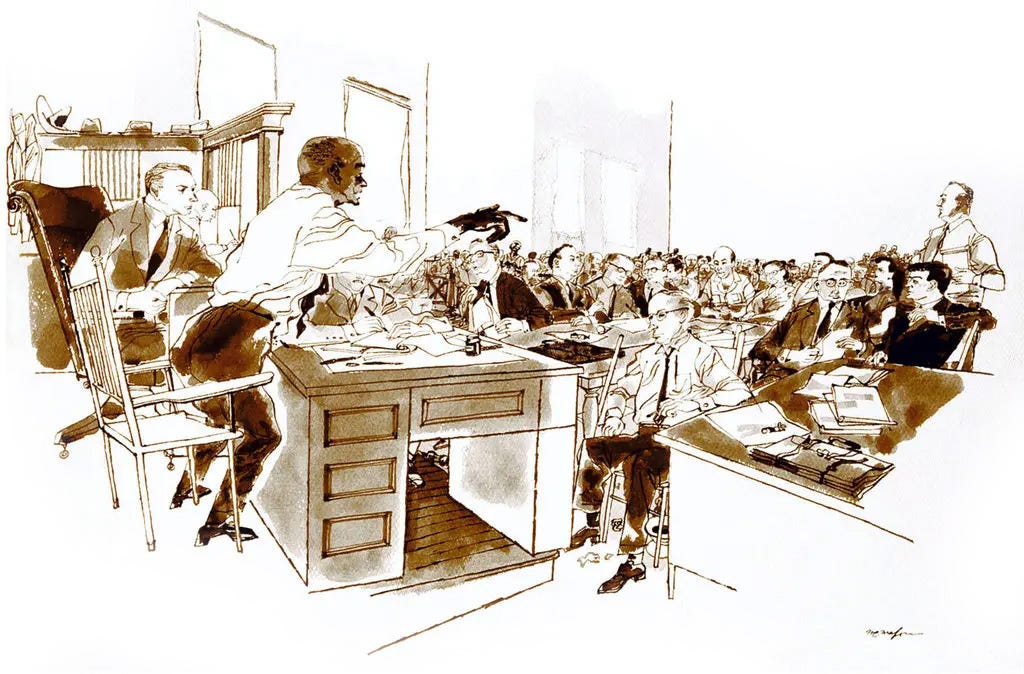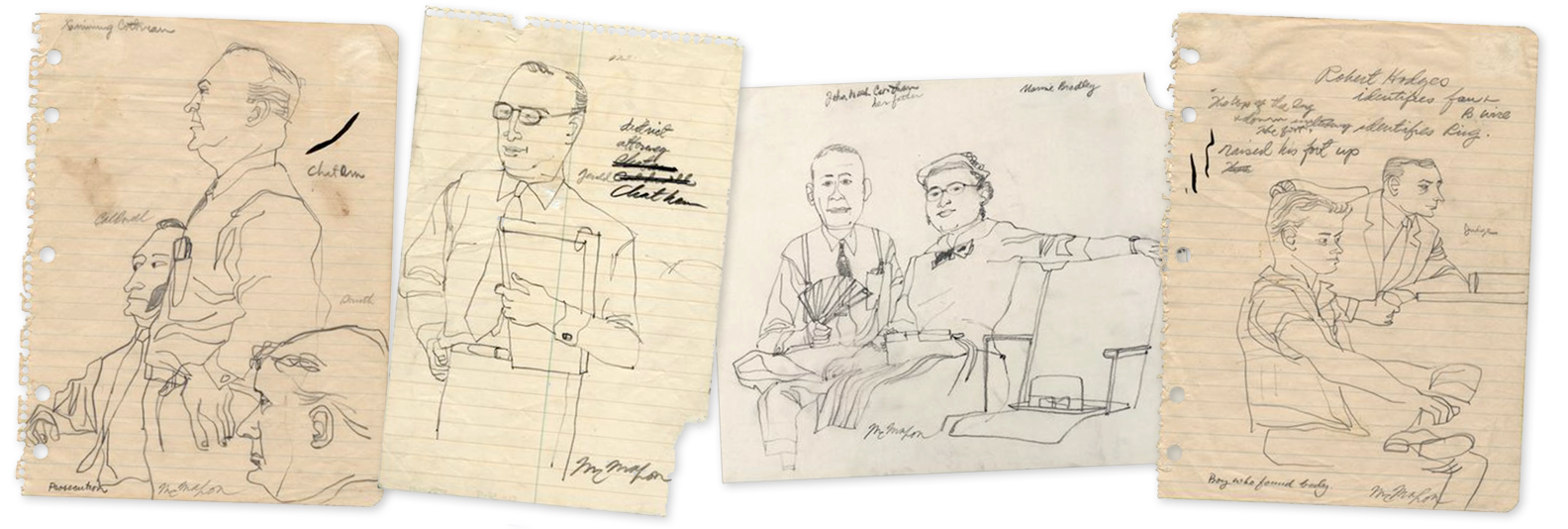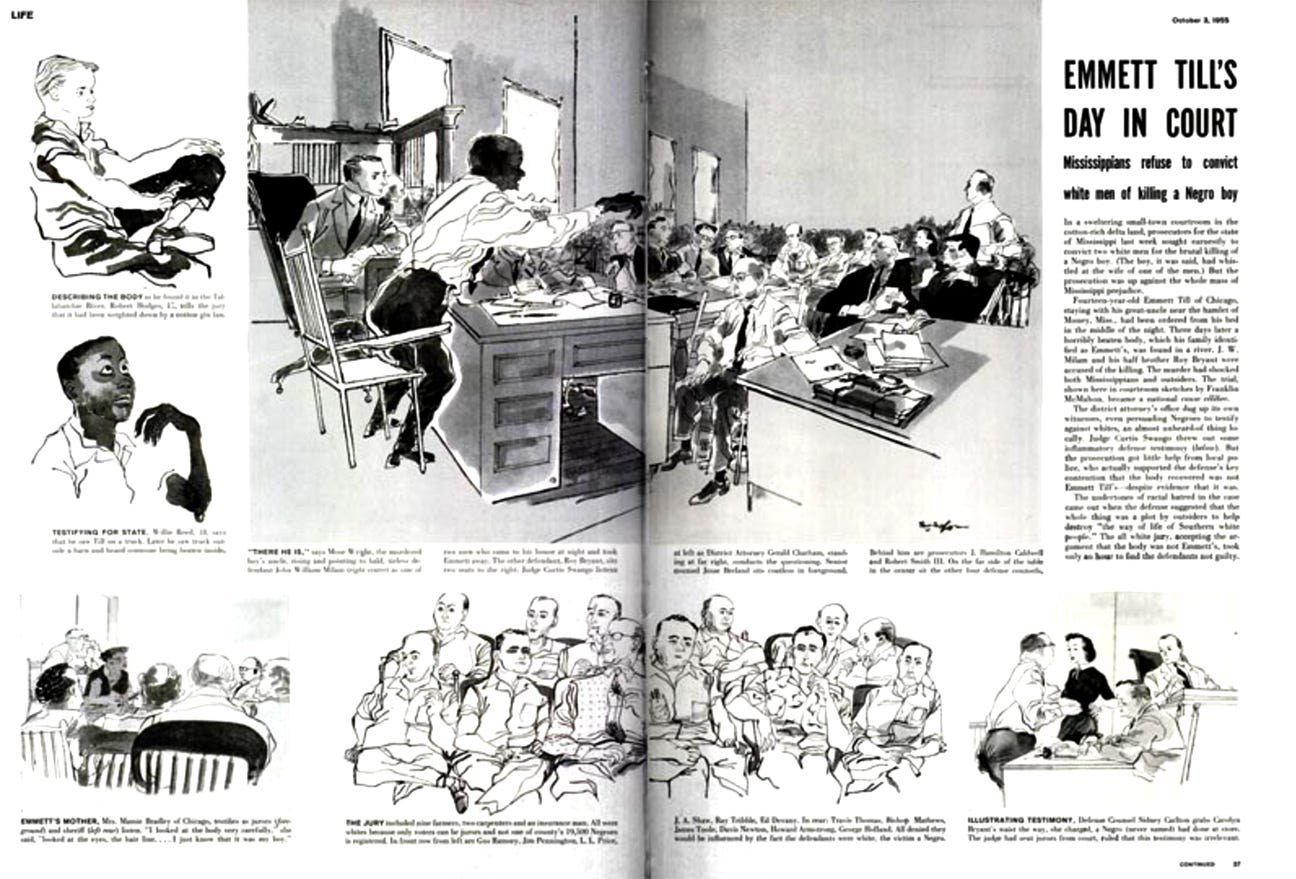Franklin McMahon: Drawing and Making History at the Emmett Till Murder Trial
An artist reporter witnessed a moment that galvanized the civil rights movement in America.

Moses Wright stood and pointed out the two suspected killers of his nephew. It was the first time in the history of Mississippi that a Black man implicated the guilt of a white man in court.
Reportage artist Franklin McMahon (1921-2012) captured the power of Wright’s gesture, stance and outstretched arm. The angled figures in the crowded courtroom steer the action. The emotion on their faces, some intense and some defiant, enhances the drama. Only a detailed and well-composed drawing like MacMahon’s could effectively enhance this narrative.
“When he pointed like that, Mose Wright had the guts to shuck 300 years of history,” McMahon explained.
It was in September 1955 that McMahon was commissioned by Life magazine to cover the trial of Roy Bryant and J.W. Milam, two white men accused of brutally murdering a 14-year-old Black boy from Chicago named Emmett Till for allegedly flirting with a white woman.
The killing jolted the Black community and helped galvanize the civil rights movement. Till’s mother Mamie Till Mobley insisted that her son's body be displayed in an open casket. This forced the nation to see how mutilated he was by the lynching. This brutality motivated Blacks in the South and the rest of America.
At the trial, cameras were not allowed. Defying judge’s orders, however, photojournalist Ernest Withers was able to photograph the moment, though from an angle that lacks the context in McMahon’s drawing.
McMahon worked in a few small-spiral bound notebooks so as to not attract attention. He would redraw the sketches in ink later in his hotel room.
After a five-day trial and one hour of deliberation, the all-white, all-male jury acquitted Bryant and Milam, who would later confess to the crime.

The public response and press coverage of the trial became a catalyst for change. McMahon’s drawings, published nationwide in Life magazine, would make him an important artist reporter committed to chronicling the civil rights movement.
He documented Martin Luther King's "I Have a Dream'' speech during the 1963 March on Washington, and King's 1965 Selma to Montgomery march for Black enfranchisement. He also covered the two 1964 mistrials of the murderer of civil rights leader Medgar Evers.
McMahon’s extraordinary ability to capture a crucial moment at the Emmett Till murder trial paved the way to a prolific and successful career as a reportage artist. He produced thousands of drawings covering political rallies, sporting events and other newsworthy stories, underscoring the power of art to influence social change.
Learn more:
McMahon’s courtroom drawings at the Chicago History Museum
An insightful conversation from Urban Sketchers Talk with Rob Sketcherman, Mario Linhares and Deborah McMahon Osterholtz.
An interview with McMahon for the Spring 1968 issue of Famous Artists magazine was reposted on Leif Peng's blog Today's Inspiration in three parts.
In December 2022, the US Congress approved a bill that posthumously awarded Emmett Till and his mother, Mamie Till-Mobley, the Congressional Gold Medal.






